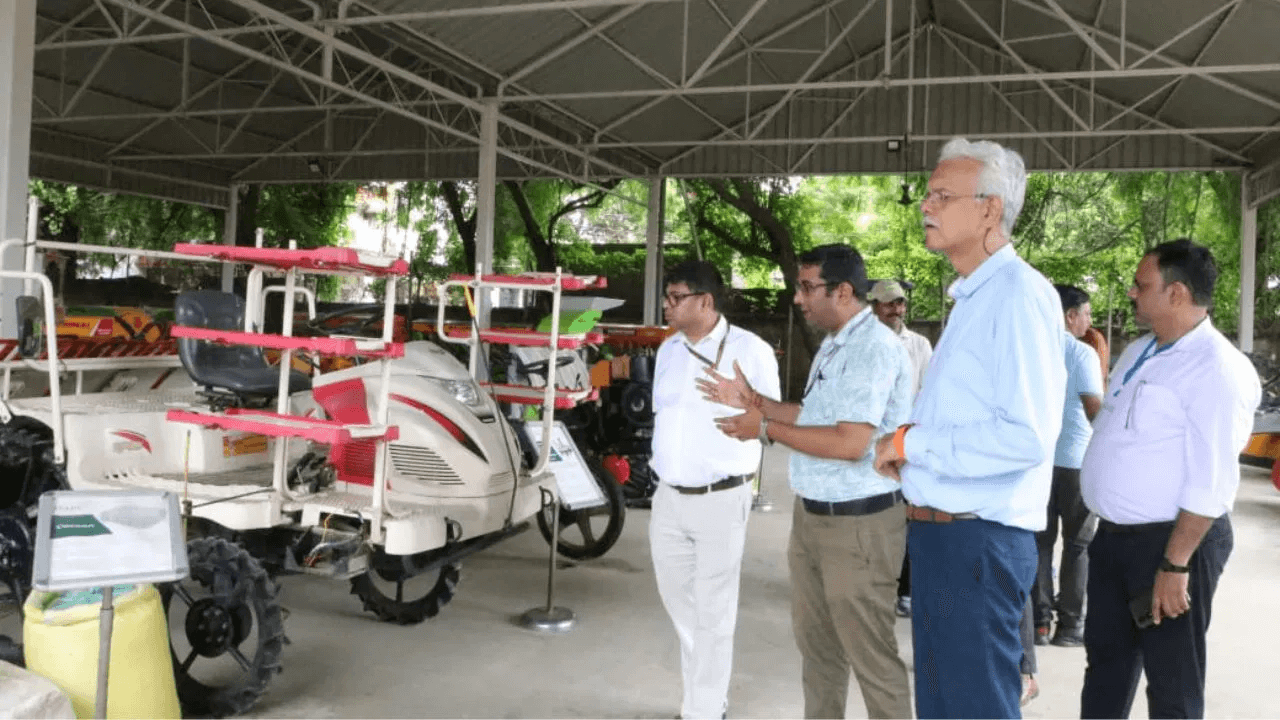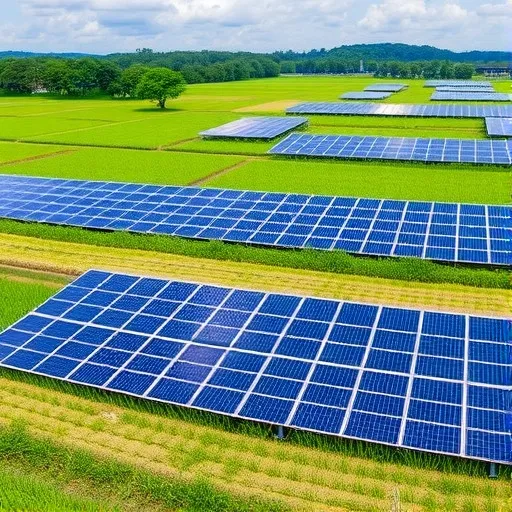Tags
Adopting agriculturally sustainable practices in rice cultivation

Aarthi JanakiRaman from Frost & Sullivan explores sustainability in agriculture, focusing on the extent to which rice cultivation shows the way ahead
Rice is amongst the top three crops cultivated globally and is a staple in the diet of more than half the world’s population, making it a crucial commodity in international trade and vital for global food security.
At present, more than 75% of rice (paddy) production comes from Asia, with China, India and Southeast Asian countries such as Thailand, Indonesia and Vietnam leading the way.
Although paddy cultivation is indigenous to Asian countries, increasingly, this commercial crop is also cultivated in other geographies in the last decade, with Sub-Saharan Africa gaining a foothold as a rice cultivation hub; the previous five years have also seen an increase in the consumption of rice in the region, making it the fastest growing staple crop.
However, rice cultivation is riddled with challenges and is affected by weather adversities, water scarcity and other abiotic stresses. Additionally, research studies highlight that traditional rice cultivation methods can be touted as one of the main causes of both biodiversity loss and climate change.
Rising temperatures adversely impact productivity and yield
Traditional cultivation requires an uninterrupted water supply, which is becoming a challenge, with water scarcity becoming a norm in various geographies. Rising temperatures and changes in weather patterns also adversely impact productivity and yield, placing an economic burden on farmers. While climate change adversely affects rice cultivation, its production contributes to global warming and climate change risk.
Rice cultivation results in the release of methane gas due to the decomposition of organic matter and the microbes present in waterlogged fields that can hasten the decomposition process, releasing more methane gas into the atmosphere. This contributes significantly to environmental adversity as methane as a greenhouse gas is more potent than carbon dioxide.
Excess use of agricultural aids to improve yield affects soil biodiversity. The rising temperature due to the accumulation of greenhouse gases can increase temperature and result in water scarcity, making it a vicious cycle that can worsen if immediate action is not taken.
Sustainable rice cultivation: Need of the hour
To meet the rising global demand, rice production must increase by at least 25 to 30% in the next two decades. With depleting natural resources and climate change effects being felt, sustainable rice production is the need of the hour. Introducing sustainability in current rice cultivation practices warrants a multi-pronged tactic, right from choosing the right type of seed, irrigation management, integrated pest management and post- harvesting practices and so on.
Small changes, such as deploying direct-seeded rice instead of transplanted ones, can save water and reduce the need for agrochemicals; it needs continuous monitoring of various weed biotypes that can affect yield. Another practice is alternate wetting and drying (AWD) water management; it not only can reduce irrigation requirements from 10 to 40%, but it also helps increase soil biodiversity and potentially reduce methane emissions. However, AWD can yield lower in certain conditions, especially when the soil redox chemistry is altered.
To ensure long-term sustainability, public and private stakeholders are investigating various approaches, one of the foremost being developing and testing climate-resistant seed varieties. Various types that resist heat, water logging, salt/alkali concentration and even multi-stress tolerance have been introduced.
China, India, and other Southeast Asian countries are actively commercializing climate change-ready rice varieties. For example, India has introduced more than 10 to 15 rice varieties that are climate change ready in the last ten years. Advances in synthetic biology and high throughput technologies have helped develop strains with desired characteristics that can withstand abiotic stresses but are also environmentally sustainable.

Organic practices to reduce water requirements
Using organic practices has also reduced water requirements and improved crop resilience and yield. Pilot trials using fragrant rice varieties (Jasmine rice) conducted in Southeast Asia where a combination approach of using organic agricultural aids, AWD, planting fewer seeds per square metre and careful monitoring of soil ecosystem and measuring hydro-biogeochemical reactions have increased yield by 20% at a minimum, while in certain instances, it has even doubled the same.
While multiple success stories prove that changes in current rice cultivation practices can improve the biodiversity and sustainability of rice production, these are still fragmented and small-scale. Therefore, an integrated long-term approach that spans the rice supply chain is needed to achieve large-scale success.
The Sustainable Rice Platform (SRP) introduced in 2011 by the joint efforts of UNEP (United Nations Environmental Programme) (1) and IRRI (International Rice Research Institute) (2) has served as a platform that brings multiple stakeholders, including public, private, and non-profit organizations together to develop solutions that can benefit farmers and consumers while ensuring sustainable practices.
The KPIs devised in the voluntary Standard for Sustainable Rice Cultivation introduced in 2015 (3) have been effective in improving output, ensuring yield quality, reducing post-harvest losses, aligning to sustainable practices and ensuring biodiversity.
Technology as an enabler for sustainable rice production
For farmers to get maximum benefits and to help reduce the environmental footprint using the SRP standards, continuous traceability and monitoring are needed. Changes from conventional practices such as direct seeding or AWD or altering the standard pest control measures must be monitored to get value and to ensure safe output that meets the nutrient requirement of consumers.
Judicious use of biologically derived crop aids, improving soil biodiversity by encouraging the growth of beneficial microbes, integrated energy, irrigation, and pest management practices all contribute towards improving the sustainability of rice farming operations.
With advances in digital farming solutions, monitoring and managing farming steps is easy so that the produce meets food safety standards. Data management solutions are successfully helping farmers manage their day-to-day operations and provide a means for end-to- end traceability of operations; this results in better nutrient management and irrigation schedule.
Better pest management and monitoring of soil threshold levels make adjustment of agrochemical dosage easier, thereby reducing the possibility of leaching and minimizing potential damage to soil biodiversity.
Scientific advances have given a wide range of technologies that can help in smart and sustainable rice farming practices. However, a strong commitment is needed from policymakers and other stakeholders to realize the full benefits. Conducting regular outreach programs for information dissemination on various technology advances ensures technology availability to farmers.
These policies make it financially attractive to implement sustainable farming practices, joint field, and pilot trials to test and commercialize sustainable solutions, to name a few that can help make rice cultivation more sustainable in the next five years.
https://www.openaccessgovernment.org/agriculturally-sustainable-practices-rice-cultivation/161702/Published Date: June 23, 2023






